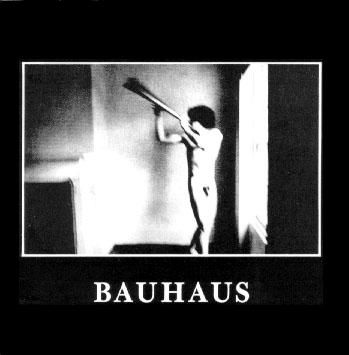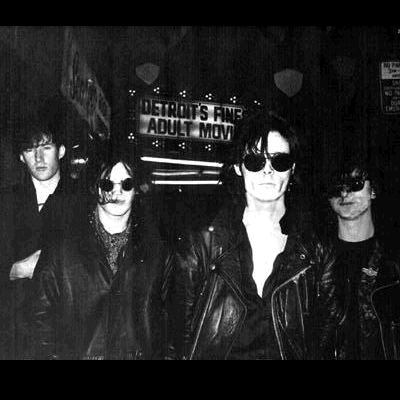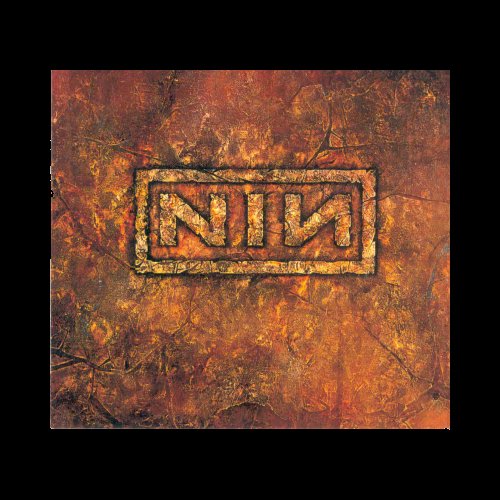|
|
|

 Arguably, the first groups to produce music that could be construed as "gothic" we
re the punk bands Joy Division in 1979 with the singles "Transmission" and "She's lost control" and Siouxsie and the Banshees
with their Kaleidoscope Album in 1980. These songs used dark imagery and depression to create an almost apocalyptic sense of
impending tragedy in the listener. Although Joy Division can never really be classified as a goth band, the sound and the
attitude that were in evidence here would go on to be the main style used in gothic music. The first recorded use of the
term "gothic" to describe the music was Factory Records owner and five star pillock Tony Wilson on BBC Radio in 1979. He
was quoted as saying Joy Division's "gothic style is an alternative to the mainstream pop scene", though their producer had
deemed the band's music "gothic dance" earlier that year.
Arguably, the first groups to produce music that could be construed as "gothic" we
re the punk bands Joy Division in 1979 with the singles "Transmission" and "She's lost control" and Siouxsie and the Banshees
with their Kaleidoscope Album in 1980. These songs used dark imagery and depression to create an almost apocalyptic sense of
impending tragedy in the listener. Although Joy Division can never really be classified as a goth band, the sound and the
attitude that were in evidence here would go on to be the main style used in gothic music. The first recorded use of the
term "gothic" to describe the music was Factory Records owner and five star pillock Tony Wilson on BBC Radio in 1979. He
was quoted as saying Joy Division's "gothic style is an alternative to the mainstream pop scene", though their producer had
deemed the band's music "gothic dance" earlier that year.

 In 1983 Bauhaus split up, with lead singer Peter Murphy embarking on a solo career. However the other bands had become firmly established, and alongside the New Romantics and Mods, Goths were becoming a recognized (if not common) sight in the streets of 80s Britain. There was a Goth scene in America as well, fueled by the arrival of the Death Rock band Christian Death, although much of the impetus for this came from the British bands of the time. In 1984, the term "Goth Rock" was being used to describe the early bands, and a second wave of groups emerged. This was spearheaded by The Sisters of Mercy, a band formed in Leeds in 1980. The Sisters were the only group of the second wave to have had a single out before 1983, and although slammed by the media for its similarity to Joy Division, the group went on to release the singles Alice, Kiss the Carpet and Temple of Love before signing a major record deal. Despite the generously sized ego of the lead singer, and various reshuffles in the lineup, they recorded three successful albums before disappearing into obscurity. The other bands of the time, including The Fields of the Nephelim, Clan of Xymox and The Chameleons all built the foundations of todays Goth culture.
In 1983 Bauhaus split up, with lead singer Peter Murphy embarking on a solo career. However the other bands had become firmly established, and alongside the New Romantics and Mods, Goths were becoming a recognized (if not common) sight in the streets of 80s Britain. There was a Goth scene in America as well, fueled by the arrival of the Death Rock band Christian Death, although much of the impetus for this came from the British bands of the time. In 1984, the term "Goth Rock" was being used to describe the early bands, and a second wave of groups emerged. This was spearheaded by The Sisters of Mercy, a band formed in Leeds in 1980. The Sisters were the only group of the second wave to have had a single out before 1983, and although slammed by the media for its similarity to Joy Division, the group went on to release the singles Alice, Kiss the Carpet and Temple of Love before signing a major record deal. Despite the generously sized ego of the lead singer, and various reshuffles in the lineup, they recorded three successful albums before disappearing into obscurity. The other bands of the time, including The Fields of the Nephelim, Clan of Xymox and The Chameleons all built the foundations of todays Goth culture.
 The Fall of Goth Rock and the Industrial Renaissance
The Fall of Goth Rock and the Industrial Renaissance



 Gothic Punk (inc. Death Rock and Death Punk). Just like with Synth Pop, Punk formed an integral part of the Goth scene both in its creation and subsequent establishment. I have put the punk bands that have been associated with Goth over the years in this category, as they will be liked by Goths, yet not broadly classified by the media or those from separate cultures as "Goth Bands". Death Rock and Death Punk were forerunners to Goth in the USA but they made slightly less impact in Europe when they arrived after Goth Rock was already firmly established.
Gothic Punk (inc. Death Rock and Death Punk). Just like with Synth Pop, Punk formed an integral part of the Goth scene both in its creation and subsequent establishment. I have put the punk bands that have been associated with Goth over the years in this category, as they will be liked by Goths, yet not broadly classified by the media or those from separate cultures as "Goth Bands". Death Rock and Death Punk were forerunners to Goth in the USA but they made slightly less impact in Europe when they arrived after Goth Rock was already firmly established.
 That concludes my summation of the Goth scene. No doubt any Goth who comes across it will argue with most of it and make up lies to substantiate their disagreement. If anyone has any truthful information that I could add to this then I invite you to sign my guestbook below.
That concludes my summation of the Goth scene. No doubt any Goth who comes across it will argue with most of it and make up lies to substantiate their disagreement. If anyone has any truthful information that I could add to this then I invite you to sign my guestbook below.



